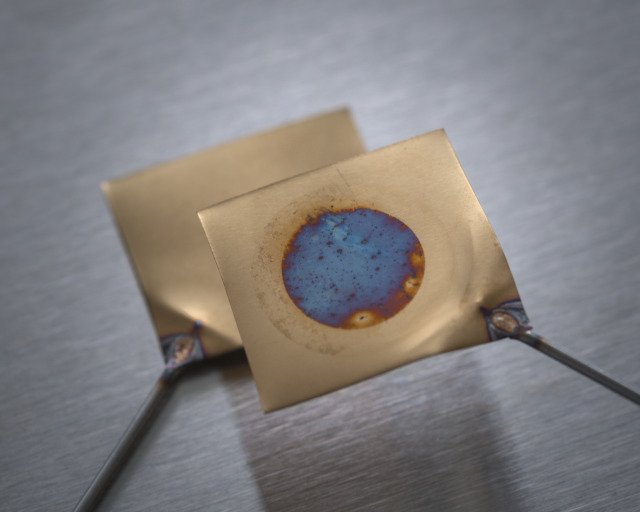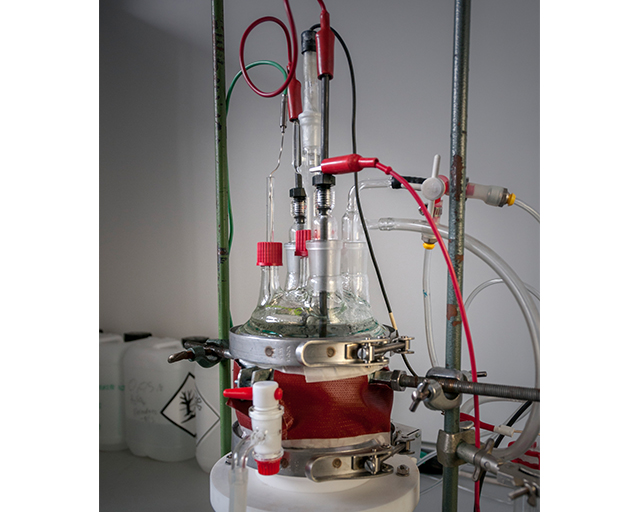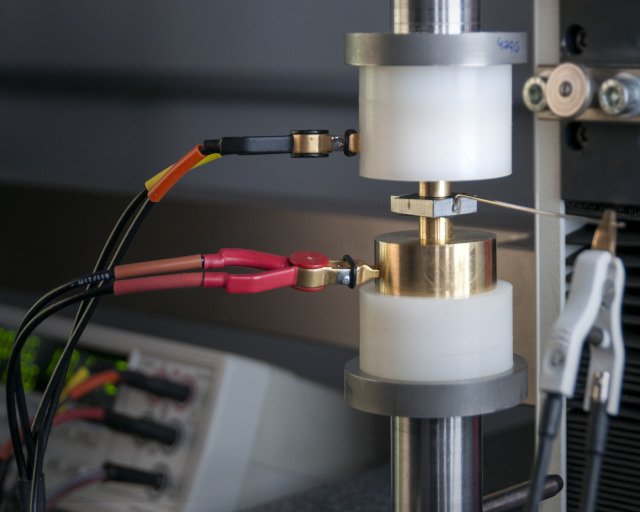
Measurement methods for the evaluation of materials for hydrogen technologies

The energy revolution is crucial for a secure, environmentally compatible and economically successful future. With the aim of realizing a sustainable energy supply, the development of climate-friendly hydrogen technologies is increasingly being focused upon in Germany. In addition to the infrastructure and storage of hydrogen, special material properties are decisive. One example of energy generation from hydrogen is the fuel cell. During application, the components of a fuel cell have to fulfill partially contradictory requirements. The bipolar plate, for instance, is required to have high corrosion resistance and, at the same time, high electrical conductivity. In order to enable the qualitative measurement of these properties and the consequent improvement of the surface coatings and modifications with regard to these requirements, the Fraunhofer IST, in collaboration with the Institute for Surface Technology (IOT) at the TU Braunschweig, has developed suitable measurement procedures for the assessment of differing materials and surface treatments.




Challenges in fuel-cell development
The fuel cell harbors great potential for a sustainable energy supply. A fuel cell consists of several stacks. A core element within a stack is the bipolar plate (BPP), which simultaneously fulfills various tasks. In addition to the electrical connection of the cells, it is responsible for cooling and transporting the reaction gases respectively reaction products via a channel structure. This results in various requirements for the properties of the bipolar plate, such as high electrical and thermal conductivity, high corrosion resistance, low material and manufacturing costs, and high gas tightness. The utilization of low-cost metallic bipolar plates suitable for series production is currently limited by the required corrosion resistance in combination with sufficient electrical conductivity.
Corrosion measurement device
The basis for the electrochemical corrosion measurement of materials is a potentiostat. In the measuring cell, the material to be tested is brought into contact with an electrolyte and connected as a working electrode. Through the application of a cell voltage, an electric current flows between the substrate and the counter electrode, whereby the electrode potential between the substrate and the reference electrode, e.g. Ag/AgCl, is measured. The measurement setup at the Fraunhofer IST was thereby modified to such an extent that a test can be carried out in accordance with the stipulated requirement of the Department of Energy (DOE). The following test variations are possible:
- Measurement with constant voltage (static) or over a defined range (dynamic)
- Variation of the electrolyte (e.g. H2SO4 and NaCl), the gassing (O2 and N2) and the reference electrodes
- Variation in temperature control and purging with various gases.
Device for contact-resistance measurement
A converted material-testing machine from the Zwick company can be used to analyze surfaces. This includes contact resistance, which describes the electrical resistance of a contact surface and is therefore a measure of the conductivity of a surface. In conductivity tests of this kind, it is customary to vary the normal force within certain limits. In order to be able to perform the measurement in accordance with the DOE, a modified measurement method was developed and validated at the Fraunhofer IST. The table below summarizes the possible measurement methods.

Benefits of the measurement methods for application
With the developed measuring procedures, it is now possible to compare and evaluate materials and layer systems for application in hydrogen technology and to develop them further through a deeper understanding of the interrelationships. Other possible applications in which these measurement processes and methods can support material characterization include tanks, pipes or valves for the storage and transport of hydrogen.
This article is part of the annual report 2020.